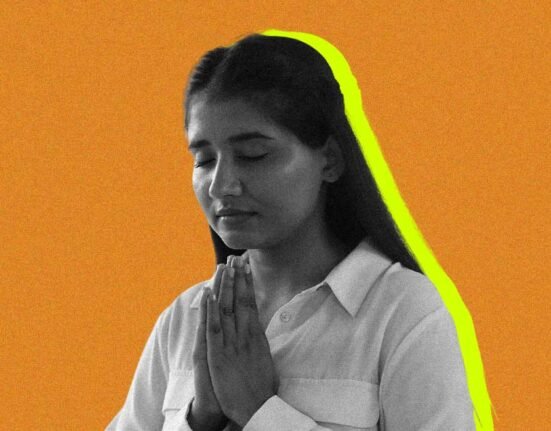Social Comparison Theory, developed by Leon Festinger, expresses that people have an inherent drive to evaluate themselves by comparing themselves with others. Social comparison theory has three main types that serve self-evaluation and self-improvement motives. The three types are:
- Upward social comparison: comparing oneself to someone better off.
- Downward social comparison: comparing oneself to someone worse off.
- Lateral social comparison: comparing oneself to someone who is more or less equal.
Conventionally, the theory of social comparison has supported the contention that having upward comparisons encourage feelings of inferiority and therefore are connected with negative transformations in the self-concept (the contrast effect), yet recent literature implies that, on certain conditions, having upward comparisons also can encourage stimulation and be associated with positive shifts in the self-concept (the assimilation effect).
Leon Festinger, in his initial stage of work, put forward the way individuals compare themselves with others (as a comparison group or reference group) in the year 1954. Zheng et al. (2018) show that when people feel inferior after a non-material comparison, they restore self-esteem by purchasing conspicuous goods (the “keeping-up-with-the-Joneses” effect).
These conspicuous purchases bridge the gap between the self and the superior other, reducing self-discrepancy and negative affect. In contrast, downward comparisons can boost pride or authentic pride, as seeing others worse off or less successful reassures one’s status. Modern social media magnifies these processes: users constantly see curated highlights of peers’ possessions and experiences, yielding frequent upward comparisons and benign envy.
Recent experiments show that luxury-related posts on social platforms trigger benign envy, which in turn increases viewers’ intentions to buy similar luxury goods. In sum, Social Comparison Theory implies that attention to others’ status, paired with self-evaluation, drives status-oriented purchasing.
Read More: Social Comparison Theory
Self-Discrepancy and Status-Seeking Consumption
Self-Discrepancy Theory (Higgins, 1987) posits that each person has three domains of self: the actual self (who they currently are), the ideal self (who they want to be), and the ought self (who they feel they should be). Self-discrepancy theory interprets the relationship between the self-experience and the effect such that the establishment of the relationship between sets of self-concepts defines the experience of the feelings of an individual.
An inconsistency between a perfectly accurate view of self, e.g., hopes and aspirations (ideal self-guide of a person) and his or her actual self-concept, and an inconsistency between duties and obligations of an individual (ought self-guide of the person) and his or her actual self-concept causes dejection-related emotions (sadness) and agitation-related emotions (anxiety).
The strength of such feeling is reliant on the score and availability of the related incongruency. For instance, if a person’s actual self falls short of their ideal self (e.g. they idealise being wealthy or respected), they experience negative emotions or diminished self-worth. To reduce this discrepancy, individuals strive for self-coherence, often through symbolic means.
Nguyen et al. (2015) note that consumption of possessions is one way people “strive to confirm, complete, and enhance” their actual, ideal, and ought selves. In practical terms, buying prestige goods can be a form of symbolic self-completion. Luxury items embody attributes of the ideal self (success, status, prestige), so acquiring them makes the actual self feel closer to one’s ideal.
Thus, a person who feels “less successful” may purchase a luxury brand to align their self-image with who they aspire to be. Compensatory consumption does occur when self-concept is threatened in order to regain positive self-evaluation. Indicatively, Zheng et al. note that low-performing students (poor ideal-actual self-gap) were ready to purchase conspicuous products to support their position.
Comprehensively, the self-discrepancy theory emphasises the role of perceived mismatch in self-identity in stimulating status-oriented purchasing in attempts to alleviate the discomfort.
Read More: Aham Brahmasmi: Deciding Your Self-Image
Signaling Theory and Conspicuous Consumption
Signaling Theory (drawn from evolutionary and economic ideas) interprets conspicuous consumption as an intentional display of wealth or status. In this view, costly goods serve as signals to others of desirable traits (wealth, success, generosity). Conspicuous goods are by definition highly visible and attention-grabbing; their very wastefulness in function makes them effective signals. Hamdani et al. (2023) define conspicuous consumption as acquiring goods “to signal self‐identity, status, wealth, and prestige” to elicit respect or admiration.
Classic Veblenian theory likewise argues that overt spending (pecuniary strength) indicates social superiority and competitive standing. Concisely, in situations where people buy exotic goods or luxury brands, they advertise about themselves. An example is that putting on an expensive watch or driving a sports car sends a message that you are in an advantaged category, or it portrays success.
Such cues may have concrete social payoff: empirical work demonstrates that affiches of proud performances tend to result in ingratiation or membership in desirable cliques (other individuals react favourably to cues of superiority). In one study, conspicuous displays of wealth earned individuals higher social preference and cooperative offers from others (a costly signal of status can generate real social advantage). Thus, signaling theory explains why status consumption persists: it is a rational means of communicating otherwise unobservable qualities through public consumption.
Read More: Psychology behind Show off
Cognitive Processes: Attention, Evaluation, and Decision-Making
The psychological sequence driving status purchases can be viewed in three cognitive stages:
1. Attention
Conspicuous cues are designed to capture notice. The perceptual salience of objects that are shiny logos, flashy cars or known brands is high. Others draw the attention of consumers in their status displays (e.g., spotting a new gadget of a friend), which leads consumers to engage in social comparison. In social spaces (and social media), there is selective attention to visible cues of wealth or success, with selective information being filtered in that pertains to self-assessment.
2. Evaluation
Once a status cue is noticed, the consumer evaluates its meaning for the self. This involves both cognitive appraisal and emotional reaction. Upward cues (others’ superior possessions) are typically appraised as threats to the self. They provoke negative self-conscious feelings (envy, inferiority, shame) as well as reduce self-esteem.
Negative commands or downward cues, on the other hand, can be responded to with pride or positive emotions. During evaluation, people compare the new information to their self-standards: for instance, “Do I measure up to this standard?” or “Does owning this type of item fit my ideal self?” These perceptions are how an individual chooses to see the world depending on his self misconceptions and intentions.
When a product relates well to valued ideal (e.g. a fancy sports car that symbolises success), something appealing is created to improve self-concept. Therefore, Social Comparison and Self-Discrepancy processes are combined in the evaluation stage: customers calculate how buying the good could minimise the gap in the self-reference or increase the status or the prestige.
3. Decision-making
Finally, these cognitive evaluations influence choice. If an individual feels a self-threat, they may choose to purchase a status good as a compensatory act. For example, Zheng et al. (2018) find that people who feel socially inferior are more likely to spend on ostentatious products to regain superiority. Decision-making is also guided by learned motives: achievement and power motives predict status purchases, whereas affiliation motives push toward communal or sustainable choices.
Importantly, this is often a motivational and affect-laden decision, not a purely rational cost–benefit analysis. Social benefits and self-affirmation of the purchase (image enhancement, membership of the group) are considered in the decision. To conclude, status cues are processed with self-relevant processing, and they lead to a decision to make a buying decision, and such a decision is influenced by a blend of emotional and strategic self-presentation.
Read More: The Psychology of Luxury Consumerism
Impact on Consumer Behaviour and Motivations
These are psychological processes that influence consumer behaviour in various ways. People with high social comparison orientation or people with low clear self-concepts are especially influenced by status information and more likely to engage in status-seeking consumption. To such consumers, luxury products are used to enhance their self-esteem or to display membership in higher classes.
Motivationally, status-oriented purchases fulfil esteem, power and distinction needs. According to the signaling theory, they are capable of providing social returns (prestige, admiring gaze, cooperation), which makes the behaviour more persistent. Such as, People with poorer grades in school or lower income will claim to be more interested in conspicuous items, taking advantage of them to derive their perceived status.
Additionally, New studies have revealed that online social comparison can have direct impacts on the purchase intention: benign envy as a result of luxury posts would result in the maximisation of interest in expensive products. Practically, marketers exploit those drives by inducing status attributes to salience (luxury branding, exclusivity cues or endorsement choice by influencers) in order to satisfy their comparison/signaling intent by the consumer.
Read More: Instant Shopping and Executive Function: How Convenience Affects Your Brain
Conclusion
To outline, the status-related purchase and conspicuous consumption are the results of the interconnected cognitive and social-psychological processes. Consumers observe what others portray, compare that judgment with their ideas of how they want to be and end up making their spending decisions, which may either diminish the self-discrepancy or provide a hint of the desired identity.
The Social Comparison Theory describes the influence of the material properties of other people on the judgment about oneself and causes compensatory purchases. Self-Discrepancy Theory demonstrates how discrepancies between the ideal and the real selves develop an incentive that can be satisfied via status goods. Signalling Theory reminds us that flashy consumption is not only an accidental display of wealth to the social world, but also that it is part of the direct message that is intended to go to the social world: displaying the possession of an unobservable quality (wealth, success). These theories and processes together explain why status and prestige constitute serious drivers of consumer behaviour, as well evident in many empirical studies.
Read More: Are Most of the Rich People Miserable?: Psychology Behind Wealth and Happiness
FAQs
1. Why is social comparison bad?
Social comparison, while a natural human behaviour, can be detrimental to mental health and well-being when it becomes frequent and focused on negative aspects. It can lead to decreased self-esteem, increased anxiety and depression, and strained relationships. Constantly comparing oneself to others, especially on social media where curated “highlight reels” are common, can create a cycle of negativity and dissatisfaction.
2. What does social comparison theory propose?
Social comparison theory, proposed by Leon Festinger in 1954, suggests that individuals determine their own social and personal worth based on how they measure up against others. It posits that people evaluate their own abilities and opinions by comparing themselves to others, especially those who are similar. This comparison process is a fundamental aspect of human cognition and plays a significant role in shaping self-concept and self-esteem.
3. How can social comparison affect a person?
Social comparison, the act of evaluating oneself against others, can have both positive and negative impacts on a person. While it can be a source of motivation and self-improvement, it can also lead to decreased self-esteem, anxiety, and even depression, especially when frequently engaging in upward comparisons.
References +
Berger, J., & Ward, M. (2010). Subtle signals of inconspicuous consumption. Journal of Consumer Research, 37(4), 555‐569. https://doi.org/10.1086/655445
Festinger, L. (1954). A theory of social comparison processes. Human Relations, 7(2), 117‐140. https://doi.org/10.1177/001872675400700202
Hamdani, F. E., Rana, S., & Kaur, J. (2023). Conspicuous consumption and identity signalling: A systematic review and future research agenda. Journal of Consumer Behaviour, 22(4), 987‐1009. https://doi.org/10.1002/cb.2179
Higgins, E. T. (1987). Self‐discrepancy: A theory relating self and affect. Psychological Review, 94(3), 319‐340. https://doi.org/10.1037/0033‐295X.94.3.319
Jin, S. V., & Ryu, E. (2020). “Instagram #instaenvy”: Envy, social comparison, and luxury brand purchase intention. Marketing Letters, 31(1), 25‐41. https://doi.org/10.1007/s11002‐019‐09509‐y
Lin, R., & Utz, S. (2015). The emotional consequences of social comparison on social networking sites: Envy, happiness, and the moderating role of comparison orientation. Computers in Human Behaviour, 52, 39‐45. https://doi.org/10.1016/j.chb.2015.05.064
Nguyen, T. D., Nguyen, T. T. H., & Ryu, K. (2015). Symbolic self‐completion and luxury consumption: The role of self‐discrepancy and self‐esteem. Journal of Business Research, 68(3), 564‐571. https://doi.org/10.1016/j.jbusres.2014.09.001
van de Ven, N., Zeelenberg, M., & Pieters, R. (2011). Levelling up and down: The experiences and consequences of status‐motive consistent social comparison. Journal of Experimental Social Psychology, 47(4), 824‐835. https://doi.org/10.1016/j.jesp.2011.02.009
Veblen, T. (1899). The theory of the leisure class. Macmillan.
Zheng, Y., Baskin, E., & Rucker, D. D. (2018). Non‐material social comparison and conspicuous consumption: When keeping up with the Joneses affects luxury spending. Journal of Consumer Research, 45(2), 525‐542. https://doi.org/10.1093/jcr/ucy007













Leave feedback about this